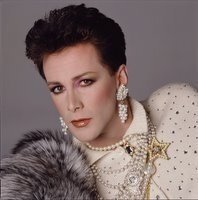Sybil Bruncheon's Hysterical Histories... The Marcia Blaine School for Girls
/We’ve all heard about “The Prime of Miss Jean Brodie” and her stormy career as a teacher there, but what do we really know about her students? As privileged girls from the well-to-do class, did they have their own scandalous secrets? Let’s investigate…
(front row, left to right)
Gwinneth MacWhorter: youngest daughter of Ebin and Enid MacWhorter, well-known music hall comedians and sidewalk buskers. “The MacWhorter Chortlers” built a reputation as bawdy and often raucous performers who entertained soldiers, sailors, and traveling salespersons with their ribald stories of farm girls, barnyard animals, and amputees’ artificial limbs. Little Gwinnie intended to follow in their footsteps.
Annalee Pooth: Orphaned at 2 years of age but supported by a generous trust fund from her deceased parents whose fortune was made in woolens. Luckily, Annalee didn’t have to dress in anything less than the finest cashmere since ordinary wool made her itch terribly.
Cathrine-Mae Hobtitt: Annalee’s secret girlfriend and soon-to-be “wife”. Cathrine and Annalee feigned complete disinterest in each other despite the fact that they spent seven entire years at private school within 24” of each other… occasionally “accidentally” brushing their hands against each other while talking with other people about Ladies’ Rugby, Ladies’ Lacrosse, and Ladies’ Bare-Fisted Boxing.
Pennelope Fipps-Hatchet: Voted “Most Friendly to Elderly People and Their Pets”… three years in a row.
(middle row, left to right)
Sarrah and Farrah McHugh: Twins (though not identical!), these two girls were as different from each other as they looked! Sarrah was given to studious pursuits, hobbies like collecting bugs and rocks, and obsessively joining clubs more associated with boys’ interests; the chess club, the math club, the astronomy club, etc. Her sister Farrah was more interested in fashion, collecting designer handbags and shoes, and joining clubs where she could meet boys; the chess club, the math club, the astronomy club, and hanging around their mens’ rooms.
Brynne and Glynne Banksden: Thoroughly identical twins who often used their being mistaken for each other to their advantage… sometimes for good-natured mischief, but later on for smash-and-grabs, pickpocketing, Ponzi schemes, and finally abduction and murder.
Kiki Btumbo: One of the few exchange students, in her case from Swazi-Cacaoland where her father was the much loved Prime Minister. Kiki was immensely popular at Marcia Blaine and never bothered or bullied even by the most troublesome girls, probably because the Minister of Propaganda in Swazi-Cacoaland had secretly spread the false rumors that her family were cannibals.
(back row left to right)
Deborah MacNichol: A self-described sorceress and Wiccan nudist, “Debbie-Mack” as she called herself was on a strict herb, twig, and beetle diet which stunned and horrified the faculty… not so much because it offended or frightened them, but because she was responsible for devastating damage to the ornamental gardens and landscaping of the Academy. She usually wore black in keeping with her witchcraft practices… and because it hid grass stains.
Mollie-Margaret Malloy: An Irish student with a lovely soprano singing voice who could accompany herself on the zither, the glockenspiel, the xylophone, and a cello-horn… simultaneously. It helped that she had an extra finger on each hand.
Stephanie Clumpp: A perfectly lovely young girl, mostly a B+/A- student, friendly without being cloying, good at crafts and needlework, and volunteered at the local doll-hospital. Tragically, at 36 years of age, she returned to the quarry where this photo was taken and threw herself into the gravel grinder. Her demise was not discovered until a week later when her suicide note was delivered to the local newspaper. But by then she had been paved into the new M8 highway between Edinburgh and Glasgow.
[Want to read other stories here on SybilSez.com? Just enter any topic that pops into your head in the "search" window on the upper right! Who knows what might come up?...and feel free to share them with your friends!]










